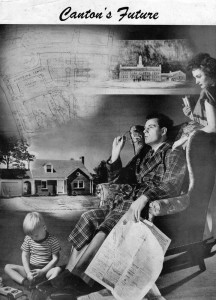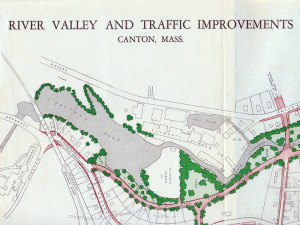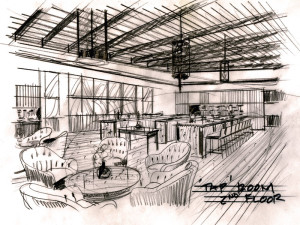True Tales from Canton’s Past: Canton’s Future Redux
By George T. ComeauThe idea behind saving the buildings at the Paul Revere and Sons property began back in 2008 when Attorney Paul Schneiders, representing the Napleton Company, stood before the Canton Historical Commission and sought a demolition request for the historic structures. It was unthinkable that such nationally significant mill buildings with a lineage that connected directly to Paul Revere would be destroyed.
At that time, we had no idea as to whether the buildings would survive, but grassroots activism took hold and within a few months the effort began to place the rolling mill and barn on the National Trust for Historic Preservation’s Most Endangered Sites. In that same year, Preservation Massachusetts declared the site as one of the state’s “Most Endangered Historic Resources.”
Fast forward to 2015, when at a historic special town meeting the people of Canton gathered to bring voice to the efforts in support of preservation. The game changer was the vote to purchase 6.85 acres of land with a bond made possible through the Community Preservation Act. The earliest proposals to acquire land were far more modest, but in the end, the town picked up a large tract of land to add to 2.2 acres that were part of a development agreement with the property owner. And so was born the Paul Revere Heritage Site. Today, we know for certain that the buildings will survive and the town will have ownership and stewardship of Paul Revere’s foundry on land that the patriot purchased in 1801.
It is critical to stress the difference between early plans to simply build a “park” and newly developed plans to build a “site.” The more ambitious planners today are talking about a destination that will enhance the local economy and bring to the forefront the life of Paul Revere in Canton. In the words of Lisa Lopez, a member of the Paul Revere Heritage Commission’s Open Space Study Committee, “This is a legacy that we will leave to future generations. It is bold, will take time, and be a great gift for the future.”
Bold visions are being created that are exciting as much as they are daunting. Yet this is not the first time grand plans have been drafted. Recently, an old plan from 1944 surfaced at the Canton Historical Society. None other than Olmsted Associates in Brookline drew up the plan for Canton Center. Yes, one of the most prestigious landscape architectural firms in the world was engaged to create a magnificent plan for downtown Canton. It was to be called Canton Park and later became known as River Valley. The plan was developed in 1939, yet the outbreak of World War II shifted the town’s attention toward much more pressing national issues. By the end of the war, the Canton Planning Board, under the chairmanship of Katharine Sullivan, presented “Canton’s Future” in 1945.
The opening salvo of the study stated the case succinctly: “For the boys coming out of uniform these proposed improvements realized, will be at once convincing assurance that the town really is what they wish it to be.”
“Canton’s Future” was a 30-page report that covered the town finances, traffic and population studies, and ended with several pages outlining the Olmsted Report. The problems of street parking and traffic were major drivers in the plan. The crux of the plan was to add a road system that would bypass the downtown and still feed Stoughton and Randolph. It was called Valley Road, and had it been achieved it would have begun at Neponset Street just south of the Viaduct, turn toward Factory Pond and then run up the Neponset River to an intersection at Bolivar Street. New connections from Plymouth Street to Revere Street would relieve bypass traffic, and a parkway would skirt to the north of Forge Pond, connecting to Pine Street and becoming a beautiful scenic route.
Like all Olmsted plans, this one was especially beautiful for the public park improvements. “Canton has neglected a natural scenic resource which could be made a real esthetic and economic asset,” the report stated. The authors observed, “Bolivar Pond and Forge Pond both have fine scenic qualities which as yet are but little marred by the encroachment of unsightly surroundings.” Most stunningly the future was foretold: “We believe that the town should, by outright purchase or by the buying of view easements, gain control of the land immediately around these ponds and hold it for public park uses.” In one prophetic case, a park was designed overlooking the Neponset River at the Plymouth Rubber property.
The plan was exceptionally bold and called for acquiring land, removing buildings, constructing roads with bridges, drainage and parks throughout the downtown area. All property was to be used “for the public benefit — roads, parking spaces, and parks,” and it was placed for consideration with the understanding that the development of the project would be carried out “by a private individual or organization working sympathetically in collaboration with the town on the entire program.” At that time, the estimated cost of all the land acquisition needed to acquire the vision was a mere $130,000.
We all know that there are no parks or “Emerald Necklace” around Forge Pond, Bolivar Pond, or Factory Pond. The plans were never realized, and in modern-day planning the town allowed the creation of zoning that instead encouraged mixed use and scores of condominiums to forever foreclose public access to richly beautiful vistas. Much of the zoning that was created was done so by the very people who benefited by closing the access and reserving these areas for private development. And today we are again at a crossroads, but we have smartened up as a result.
The newest plan to reserve the choicest parcel at the Paul Revere Heritage Site in essence makes good on the promise of at least part of the Olmsted Report — “to increase the character, volume of business and property values in the town.” And to begin to visualize this process, many people have been hard at work developing the concept and subsequent business plan for town approval.
In short, the first floor of the rolling mill would be transformed into a state-of-the-art museum, and the second floor would become an artisans cooperative. And in the Joseph Warren Revere barn would be a visitor center and showcase for a film on the life of Paul Revere in Canton. The upper floors of the barn would be a taproom or colonial-style pub, and a high-end restaurant under the soaring chestnut beams of the third floor.
The grounds would become a backdrop as well as a main character in the vision, and would help interpret the Paul Revere House Archeology Site and the Colonial powder mill that helped America win Independence over Britain. And true to the Olmsted Plan, the work would be completed through a public/private partnership with a nonprofit organization created exclusively to manage and lease the land to be programmed for public activities.
What would this future Paul Revere Heritage Site look like? Well, imagine the commons hosting a farmers market or antique fair. The plaza behind the mill becomes a wedding site, or the July 4th celebration within walking distance of the downtown illuminated in the magic of a child’s eye. In the rolling mill, there would be artisans not only making their craft, but also teaching and sharing their passion. Behind the sturdy beams of the J.W. Revere barn, an inviting fireplace would be the place to go on a Saturday night to catch the big game. Upstairs, diners are having an elegant dinner in recognition of a freshly minted college degree. The museum, filled with fifth graders on a sunny October morning, all learn about America’s first true entrepreneur, then eat a picnic lunch on benches overlooking the Neponset River. Meanwhile a group of senior citizens on a day trip from Boston take in an exhibit featuring the cannons of the U.S. Civil War.
How can this vision become realized and not follow the shelved idea of the Olmsted Plan? Quite simply, we need to come together and support the vision documents, work on the business plan, and begin to lay the foundation for the changes we want to see in Canton. More precisely, find a way to get involved with the local group that is working on the Paul Revere Heritage Site. Reach out and help build Canton’s Future.
Click here to view a presentation of the proposed historical and cultural uses for the site courtesy of Canton Community Television.
Short URL: https://www.thecantoncitizen.com/?p=32427













